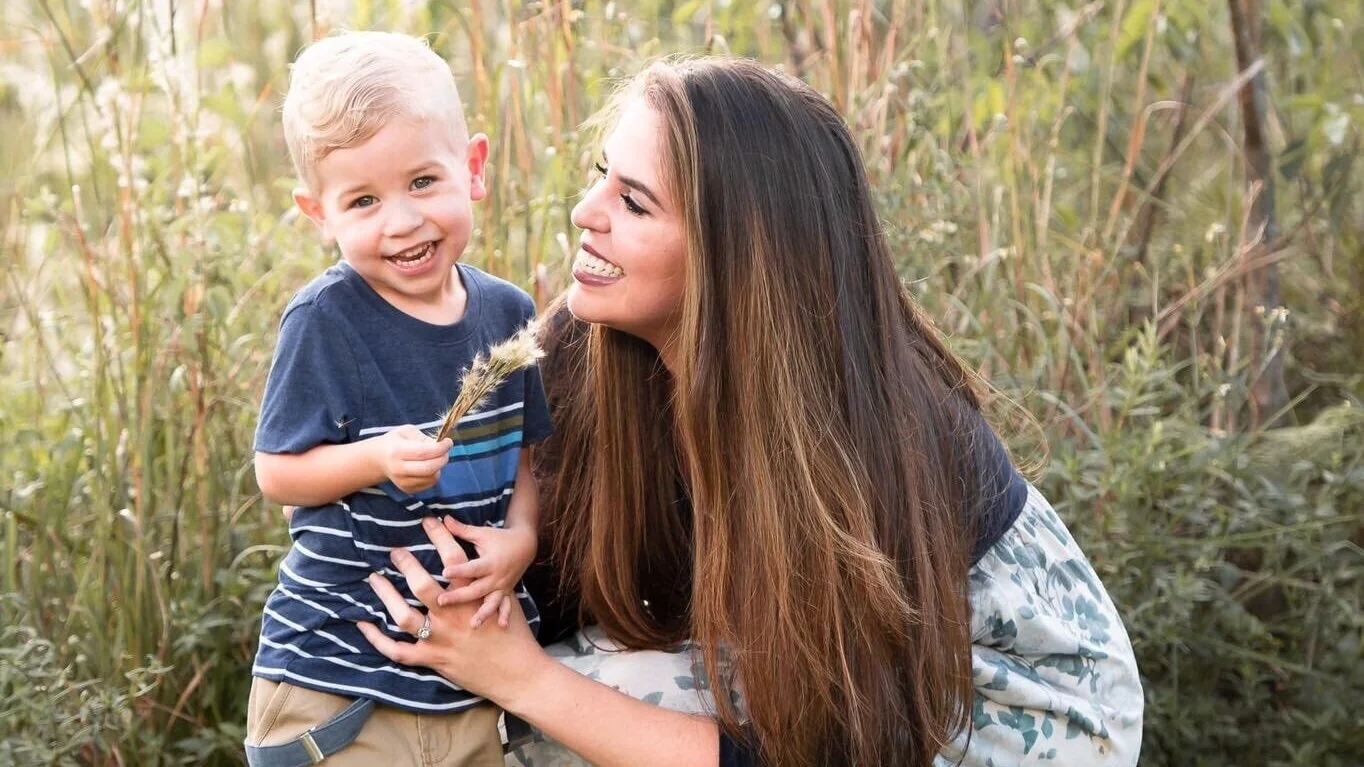Help Develop Language in Your CDH Child
Your CDH baby has just gone through an incredibly trying experience coming into this world. They had to fight and struggle each day, just to stay here with you. Bringing them home was one of the happiest and most rewarding moments of your life because you helped them overcome the challenges they were born into. However, often the fight isn’t over yet. Now, you have to start thinking about other development milestones such as feeding, understanding, crawling, and walking. Some of our Tiny Heroes may struggle with speech and language development, and that’s okay! There are many things you can do to help prevent or overcome challenges with speech or language. Here are a few tips and tricks to help your little one learn to understand and use words at various ages.
Birth to 2 Years
Say sounds like “ma,” “da,” and “ba.” The sounds /m/ and /b/ are highly visual, which makes it easier for your child to model them. Encourage your child to say them back to you and reinforce every attempt.
Pretend to have a conversation with your CDH baby. When they make a sound, look at them and talk back to them.
Talk to them while you’re giving them a bath, feeding them, or doing other routine activities. Talk to them about what you are actively doing, where you are going, who is coming to visit, or what they will see.
Describe your surroundings. Point out colors and shapes.
Start teaching them how to count.
Use gestures, such as waving, pointing, tapping shoulder, etc., then encourage them to do that same back to you.
Talk about animals and the sounds they make. Kids love making animal sounds.
Add on to what your child says. They may say “Mama” to get your attention, so respond with more words such as “Here is Mama.”
Read books to your Tiny Hero. Choose books with large illustrations and have them point to or name objects as you read the story. Remember you don’t have to read every word! The important thing is that reading time is a great opportunity to interact with them and introduce them to more language.
During this specific child’s age, communication may be more challenging because their speech and language are limited. It’ll be helpful to take the time to learn a few words in ASL so that you could use them in conjunction with speech to try and help establish communication with your baby. Some helpful signs for words you can learn include: more, help me, all done, drink, eat, and tired/sleepy. Check out this article on how to teach your baby 25 key words in baby sign language.
2 to 4 Years
Model good speech. Speak clearly to them and drop the "baby talk," otherwise it may cause them difficulties with their speech in the future.
Sometimes baby talk is unavoidable. So when it happens, make sure to add the adult word, too.
Repeat what your child says and add on to what they say. You will expose them to more language as you expand your vocabulary when you speak to them. For example, if they say "Red truck," respond with, "That is a red truck, with a ladder on top, too!"
Play the yes-no game with your child to help them understand and ask questions. Encourage them to make up their own silly questions to try and "trick you."
Ask questions that include a choice. "Do you want to play outside or inside?" Do you want milk or juice?"
Introduce them to new words each day. You can have a "Word of the Day!"
Show them pictures of people they know. Tell your Tiny Hero all about them, and you can even make up stories. Ask your child to tell their favorite stories back.
Put items into categories, such as "things to eat" or "things to play with." Mix the items up and see how you can make them match again.
Place familiar items in a box and have your child choose an item they want to talk about. They can tell you what it is and how they use it.
Make sure they're getting enough playtime on their own and with other children. Children are great at imitating their peers, and sometimes, they learn even better from other kids than they do from us.
4 to 6 Years
Make sure to give your child your attention when they're talking to you. Doing this shows that it is more beneficial to speak when they want your attention than to act out.
Before you speak to your child, make sure you have their attention.
Reinforce the behavior when they speak to you and demonstrate that you understand what they're telling you. Just like adults appreciate, when you show that you understand by nodding or saying "uh-huh," your child will too.
Pause in between sentences when speaking to them. This gives your child the opportunity to respond.
Encourage your child to learn new words. Say a new word and tell them what it is. Throughout the day, use that word and expose your child to different examples of how to use it.
Play the guessing game. You describe an item, and they need to guess what it is. You can even make it a competition with the other children.
Start working on grouping items and putting them into categories, or you can even have them find the item that doesn't match.
Encourage them to give directions. Follow their instructions as they are telling you how to make their sandwich. Kids love to feel like they're in control, and it will help them learn how to explain things.
Talk to your Tiny Hero about your daily routine, such as grocery shopping. You can bring them and talk about what you will buy. You can even have them help with the grocery list (Warning: you may see lots of brownie mix or other treats on the list)
Try to add in the opportunity to speak about what you're doing throughout your everyday tasks.
Keep reading to them. You can even have them try to read to you and "put you to sleep" as a motivator.
When you're watching movies with them, talk about what you're watching. You can have them guess what might happen next or who their favorite character is. Talk about how the characters are feeling, and at the end, have them give them a summary of the movie. (Make them work for screen time)
Play! Make sure they're doing different types of play (independent, parallel, associative, and cooperative, etc.)
If you're looking for great speech and language apps to use with your Tiny Hero, check this article out! Download your favorite app to your phone or iPad/tablet and practice with your child from whenever you are!
If you have concerns about their speech and language development, don't hesitate to see a speech therapist and have your Tiny Hero evaluated. They are trained to help and will provide you with specific ways to best help your Tiny Hero!




